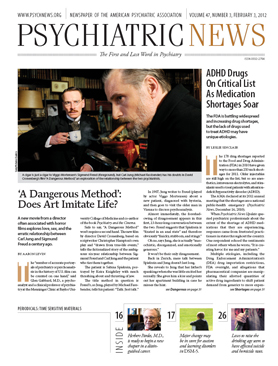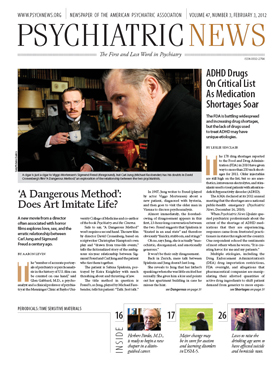The use of information technology (IT) to support the provision of health care holds great promise for improving the quality of care and reducing costly medical errors, but greater oversight and accountability are needed to ensure that any risks associated with the introduction of new services and technologies are outweighed by the benefits to both patients and clinicians.
This recommendation is at the heart of a report by the Institute of Medicine’s (IOM) Committee on Patient Safety and Health Information Technology that was sponsored by the Department of Health and Human Services (HHS). Released November 8, 2011, the report examines the risks and benefits of a range of health information technologies, including electronic health records, secure patient portals, and health information exchanges.
The researchers acknowledged a number of limitations to their study, including a focus on only patients receiving a diagnosis of depression and a lack of information on patient outcomes. They also noted that treatment practices may have changed in the past five years with the introduction of new medication options.
Still, there have been “several” reported patient deaths and injuries, the report noted, resulting from technology-related dosing errors, failure to detect fatal illnesses, and delays in treatment resulting from faulty user interfaces or the loss of data, according to the IOM.
To optimize the safety of health IT going forward, the IOM offers 10 recommendations in the report:
The secretary of HHS should publish a plan within 12 months that includes a schedule for working with the private sector to assess the impact of health IT on patient safety and for minimizing the risks of implementing and using health IT.
HHS should ensure that health IT vendors do not prohibit the free exchange of information or the sharing of patient-safety concerns through the language contained in legal contracts and clauses.
The HHS Office of the National Coordinator for Health Information Technology (ONC) should work with the private and public sectors to provide access to users’ reports of their experiences with multiple health IT products.
HHS should fund a new Health IT Safety Council to evaluate criteria for assessing and monitoring the safe use of health IT and for measuring the impacts of these technologies on patient safety.
Health IT vendors should be required to publicly register and list their products with the ONC.
HHS should establish processes and principles that health IT vendors must adopt as they design and develop high-quality, low-risk products.
HHS should establish a mechanism for both technology vendors and users to report deaths, serious injuries, or unsafe conditions related to the use of health IT products.
Congress should establish an independent federal entity to investigate reported deaths, injuries, or unsafe conditions linked to health IT.
HHS should report annually on the progress of health IT safety and ensure that the FDA develops a framework needed for any potential regulation.
HHS should collaborate with research groups to support cross-disciplinary research on how best to develop and adopt safe health IT.

